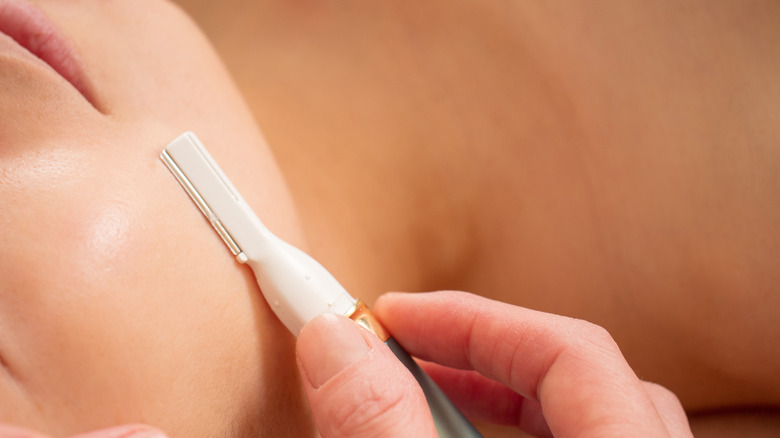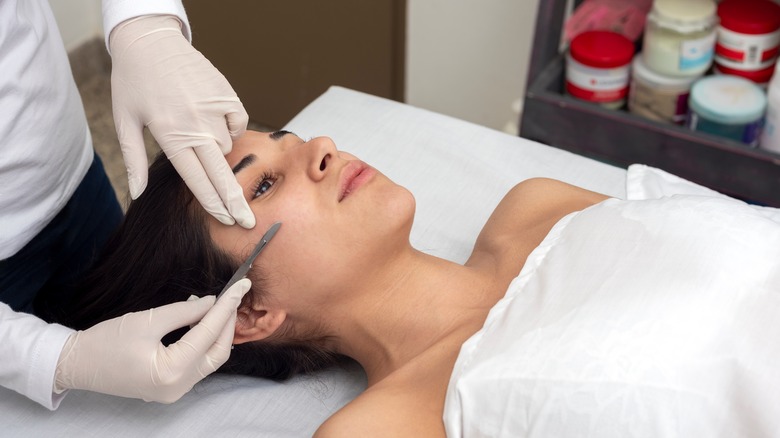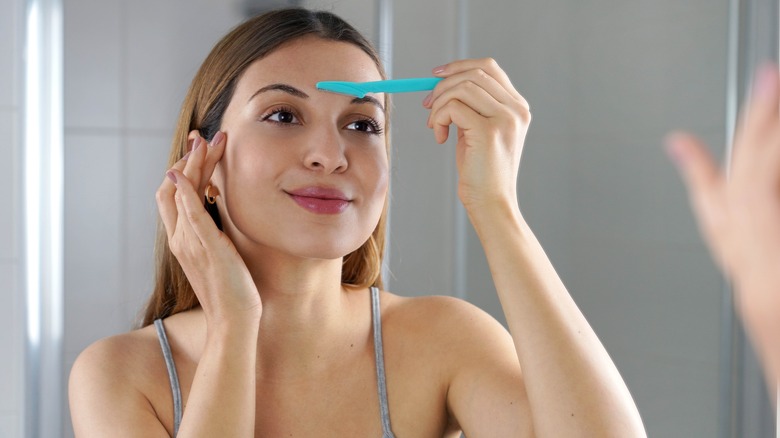What Is Body-Planing? Our Massage Therapist Explains The Skin Treatment
The slew of skincare treatments available can make it hard to keep up with the newest and latest trends. From unique treatments that will up your facial game, like the trendy vampire facial, to letting snails roam on your face, there's no shortage of innovative ways of keeping yourself looking fresh and glowy. One practice you may have heard of is body-planing, also known as dermaplaning. Although it's been around for centuries, it didn't become hugely popular until the '80s and '90s, and now it's starting to garner interest again.
If you've just heard about dermaplaning, you're in luck, as we got an exclusive scoop from nutritionist, massage therapist, and Reiki healer Stephanie Olton of Seraphim Wellness. "Body-planing or dermaplaning is an exfoliation and deep clean technique for the skin. It is used mostly on the face and removes dead skin cells and deep-embedded dirt, resulting in smooth, vibrant skin," she told Glam. "Body-planing can remove unwanted fine hairs and reduce the appearance of lines and scars. Exfoliation and gentle stimulation of the skin cells allow oxygen and nutrients to diffuse and be absorbed," Olton added.
While dermaplaning is non-invasive and most people can benefit from it, there are certain things to consider before booking an appointment.
What to consider before your body-planing session
Body-planing may be a new concept for you, but according to Stephanie Olton, the technique was used all the way back in ancient Egypt and has evolved since, so it's a fairly tried-and-true skin technique. Those who may balk at the thought of a razor on their face need not be worried. "Body-planing is very safe ... It doesn't involve chemicals or laser therapy and applies to all skin types and tones," Olton exclusively explained to Glam. However, because a sharp tool is used, those who have any wounds, lesions, or open sores on their faces should stay away from dermaplaning until the skin is completely healed.
Curious about booking an appointment? Be ready to spend a good chunk of change. "A treatment typically costs anywhere from $150 to $250 per session. Each session is about 20 minutes," Olton revealed to Glam. "A rounded scalpel-shaped tool is used to gently exfoliate and stimulate the skin cells. It is normally a painless and relaxing anti-aging experience." Since it's not feasible for everyone to shell out a couple of hundred dollars regularly, you can try going to a spa for a session to see if it suits your skin and then, if you love it, begin self-dermaplaning at home.
You can DIY body-plane in the comfort of your own house
If you're ready to try dermaplaning but don't have the funds, you can safely do so at home with the right tools, which you can easily purchase online for a fraction of the cost of a single professional appointment. Just make sure to clean your dermaplaning razor so you don't redeposit bacteria onto your skin. And if you're worried about stubble, dermaplaning hair regrowth isn't as scary as it sounds — and your peach fuzz won't grow back thicker. It may seem to at first, but you just have to practice patience. You'll notice quickly that your hair will grow back to its normal thickness.
You might be tempted to dermaplane your face every day, especially if you notice favorable results. However, since this is an exfoliation process that shaves off dead skin cells, you may experience irritation at first, and you never want to remove too much skin, either. Instead, dermaplaning around once a month is typical, as it allows your skin to regenerate and heal between sessions. And remember to swap your razor for a fresh one as soon as it becomes dull to avoid nicks.


